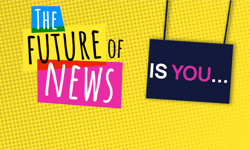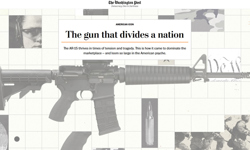1. Web 2.0 is not new. (Farhan Lalji, Precedent Communications)
Many of the central strands of Web 2.0 are not so much ‘new’ as a natural evolution of the web. Did we refer to colour TV as TV 2.0? No, it was just a natural progression from black and white, just as digital is a natural progression from analogue.
2. Participation is the pillar of Web 2.0. (Anu Gupta, Headshift)
The best known sites (Flickr, MySpace, YouTube, Wikipedia) are just empty shells without active user participation. These sites provide little more than a platform for their users to publish from. Wikipedia, one of the world’s top 10 most visited sites, is run by a skeleton crew of barely ten people, whose main task is to manage the servers.
3. Changing marketplaces. (Farhan Lalji)
The old business model revolved around throwing messages at users in the hope that some of it might stick. The new business model puts the consumer at the heart of the process and allows them to tell organizations what they want. The newer-still model allows users to network with each other, virtually cutting the site owner out of the loop. The challenge for site owners is to work out what they can learn from what is being said.
4. Users as experts. (Anu Gupta)
Publishers need to remind themselves of the fact that their readers / users will know more than they do. The challenge is to harness users’ knowledge in commercial ways. Good examples include Reuters’ financial glossary (a wiki), Yahoo! Answers and Digg (www.digg.com). All the content on Digg is user generated, with articles being submitted and voted on by the community.
5. Be the hub of your community. (Ashley Friedlein, E-consultancy)
Whichever community you serve, you want your site to be the centre of it, and giving users the chance to participate helps lock them in.
6. Publish and play. (Anu Gupta)
Traditional publishers are very wary of ownership and copyright. The free spirits of Web 2.0 are not. Whether it be software applications or straight text, barriers are coming down. Users see themselves as owners of all they see and use. Hence the trend towards mashup sites, where users have been able to create stand alone services based on freely available data and applications from third party sites.
7. Threats to traditional media. (Philip Walker, emedia)
With the increasing commercial success of sites reliant on user generated content (UGC), the value of traditional journalism is, arguably, diminished.
8. Traditional media needn’t throw the towel in yet. (Anu Gupta)
The more nimble footed of the traditional players are successfully incorporating UGC alongside the output of their paid journalists. The Guardian sports page (http://sport.guardian.co.uk/) is a great integration of Web 2.0 and formal content. The UGC does not replace the existing content but supplements it. Users get their formal view of the news but also the ‘under the covers’ stuff that allows readers to get involved.
9. Give users control. (Philip Walker)
Emedia makes it as easy as possible for recipients of its email bulletins to unsubscribe. This helps build the all important trust, and is also a guarantor of high standards. Knowing your subscribers can easily cut and run keeps the team up to the mark.
10. Monetisation. (Anu Gupta)
The focus on communities has lead to a proliferation of small niche sites – the embodiment of the much talked about ‘long tail’ (the theory that the aggregate volume of visitors to all the little sites outweighs the volume of visitors to the few really big sites). What allows these sites to exist commercially is Google Adwords.
11. Low cost. (Alex Manchester, Melcrum)
The entry cost for much of Web 2.0 is low enough to allow everyone in. Start small, test the water and then roll out big if the demand is there. Podcasting is one example; you can get started for less than £100. All you need is a couple of microphones, a computer (which you probably have already), editing software (Audacity is free), someone with a bit of technical know how and somewhere quiet (a meeting room) to do it in.
12. Organisational structure. (Jane Wilkinson, Euromoney)
Many traditional media companies are struggling to adapt to Web 1, let alone Web 2.0 and there are two main barriers. Many medium to large sized publishers long ago turned their titles into separate profit centres and gave each a large degree of autonomy. This structure can make it difficult to implement company wide online strategies. The second hurdle is the continued reluctance of some print journalists to deviate from their print deadlines and consider ‘web first’ options.
13. Harness the power of the user. (Raju Diswani, Metal Bulletin)
Metal Bulletin uses UGC as the basis for its highly successful Metal Trends Index ezine. Once a month, Metal Bulletin invites its ezine audience to complete a 60 second online survey. The response to this is then analysed and the content packaged into two fortnightly ezines. The content is original, high quality and does not impact on any of their existing outputs. Best of all, because of the high degree of automation, there is little overhead. The whole process is run by an administrator, not a journalist.
14. Don’t forget the big G. (Ashley Friedlein)
80% of UK searches are done via Google. Advertising, based on CPM page impressions, helps translate that traffic into revenue. This is the financial justification underpinning much of Web 2.0.
FEATURE
Making Money from Web 2.0
On 23 November 2006, the Specialised Information Publishers Association (SIPA) held a conference looking at Web 2.0 at the Novotel, Tower Bridge. James Evelegh looks at some of the main themes coming out of the day.










